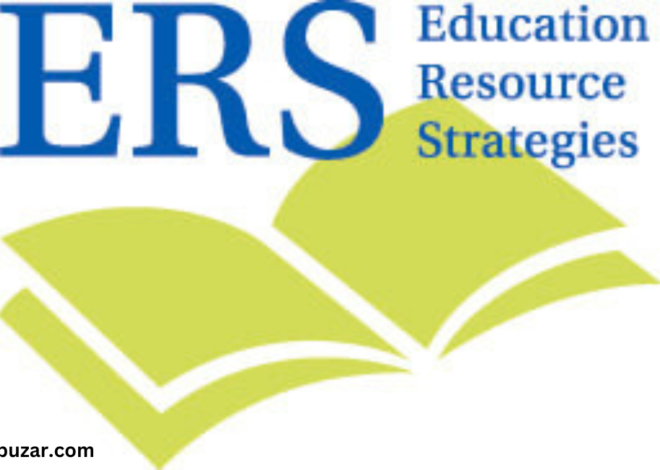
Educational Assistants : The Ultimate Guide to Educational Assistants: Enhancing Learning in Modern Classrooms in 2024
In the hustle and bustle of modern classrooms, the role of an Educational Assistants (EA) often shines as a beacon of support and enrichment. But what exactly does an educational assistant do, and why are they so vital to contemporary education? In this comprehensive guide, we’ll delve into the multifaceted world of educational assistants, exploring their roles, benefits, and the profound impact they have on both students and teachers.
The Role of Educational Assistants
Educational assistants wear many hats, performing a variety of tasks that bolster the educational experience.
Classroom Support
EAs often provide essential classroom support by helping with lesson preparations, managing resources, and assisting with instructional activities. Their presence allows teachers to focus more on delivering quality education rather than getting bogged down by logistical details.
Individual Student Assistance
One of the critical roles of an EA is to provide targeted support to individual students, especially those who may need extra help. This can include working with students with learning disabilities, offering one-on-one tutoring, or supporting students who need additional encouragement.
Administrative Duties
In addition to direct educational support, EAs also handle various administrative tasks. This can range from maintaining student records to organizing classroom materials, all of which contribute to a smoothly running educational environment.
Benefits of Educational Assistants
The inclusion of educational assistants in the classroom brings a multitude of benefits.
Enhancing Teacher Productivity
By taking on supportive roles, EAs free up teachers’ time, allowing them to concentrate more on instruction and less on administrative tasks. This increased productivity can lead to more effective teaching and better educational outcomes.
Providing Individualized Attention
With an EA in the classroom, students who need extra help can receive the attention they deserve. This individualized support can be critical for students’ academic success, particularly for those who struggle to keep up with the rest of the class.
Supporting Diverse Learning Needs
Educational assistants play a crucial role in accommodating diverse learning needs. Whether it’s assisting students with disabilities or providing language support to non-native speakers, EAs help create an inclusive learning environment where all students can thrive.

Skills and Qualifications of an Educational Assistant
To excel in their roles, educational assistants need a specific set of skills and qualifications.
Essential Skills
Key skills include strong communication abilities, patience, empathy, and the capacity to work well under pressure. An EA must be adaptable, able to handle unexpected situations with ease, and possess a genuine passion for helping students succeed.
Necessary Qualifications
While the exact qualifications can vary by region and school district, most educational assistants are required to have a high school diploma or equivalent. Additional certifications in education or child development are often preferred.
Ongoing Professional Development
EAs should engage in continuous professional development to stay current with educational best practices. This can include attending workshops, enrolling in certification programs, and participating in professional learning communities.
Types of Educational Assistants
Educational assistants come in various forms, each with unique roles and responsibilities.
General Classroom Assistants
These EAs support the overall functioning of the classroom, assisting with general tasks and helping all students as needed.
Special Education Assistants
Special education assistants specialize in working with students who have special needs. They provide tailored support to ensure these students receive an equitable education.
Bilingual Assistants
Bilingual assistants help bridge language barriers for students who are non-native English speakers. They support language acquisition and help these students integrate more smoothly into the classroom environment.
The Impact on Students
Educational assistants significantly influence students’ academic and personal growth.
Academic Performance
With additional support, students often show marked improvements in their academic performance. EAs provide the extra help needed for students to grasp complex concepts and stay on track with their studies.
Social and Emotional Development
Beyond academics, EAs contribute to students’ social and emotional development. They provide a stable presence in the classroom, offer emotional support, and help students navigate social interactions.
Inclusive Learning Environments
Educational assistants are key to fostering inclusive classrooms. By supporting diverse learning needs, they help create an environment where all students feel valued and included.
Challenges Faced by Educational Assistants
Despite their critical role, educational assistants face several challenges.
Balancing Multiple Responsibilities
Juggling various tasks can be demanding. EAs must balance direct student support, administrative duties, and other responsibilities, often simultaneously.
Managing Diverse Student Needs
Classrooms are diverse, with students requiring different types of support. EAs must be adept at managing this diversity, tailoring their approach to meet each student’s unique needs.
Navigating Interpersonal Dynamics
Working closely with teachers, students, and parents can sometimes lead to interpersonal challenges. EAs must navigate these dynamics with diplomacy and professionalism.
Training and Professional Development
Continuous learning is essential for educational assistants to maintain and enhance their effectiveness.
Initial Training Programs
Most EAs undergo initial training programs that cover the basics of classroom support, student interaction, and educational best practices.
Continuing Education Opportunities
EAs should take advantage of ongoing education opportunities, such as professional development workshops and advanced certification programs, to stay updated on the latest educational strategies and tools.
Certifications and Workshops
Various certifications and workshops are available that focus on specialized areas, such as special education or technology integration, helping EAs expand their skill sets.
Technology and Educational Assistants
Technology plays an increasingly important role in the duties of educational assistants.
Use of Educational Software
EAs often use educational software to assist with lesson planning, student assessments, and personalized learning programs.
Integrating Assistive Technologies
For students with disabilities, assistive technologies can be game-changers. EAs help integrate these tools into the classroom, ensuring all students can access the curriculum.
Virtual Learning Environments
In the age of digital learning, EAs also support virtual classrooms. They help manage online learning platforms, assist with remote instruction, and provide technical support to students and teachers.
Collaborative Teaching Strategies
Successful educational assistants often work closely with teachers to enhance the learning experience.
Co-Teaching Models
Co-teaching involves EAs and teachers sharing instructional responsibilities.
Effective Communication with Teachers
Regular meetings and open dialogues help ensure both parties are aligned and can effectively support students.
Joint Lesson Planning
Collaborative lesson planning allows EAs to provide input on activities and strategies that can benefit all students, particularly those needing extra support.
Case Studies and Success Stories
Real-life examples highlight the positive impact of educational assistants.
Real-Life Examples of Impact
Stories from schools across the country demonstrate how EAs make a difference. From helping a struggling student achieve academic success to supporting a child with special needs in building confidence, these examples illustrate the vital role EAs play.
Testimonials from Teachers and Students
Teachers and students often share glowing testimonials about their experiences with EAs. These firsthand accounts provide compelling evidence of the benefits EAs bring to the educational environment.

The Future of Educational Assistants
Looking ahead, the role of educational assistants is poised for significant evolution.
Trends in Education
As educational trends shift towards more personalized and inclusive learning, the demand for skilled EAs is likely to grow.
The Evolving Role of Technology
With technology becoming more integral to education, EAs will need to stay abreast of new tools and platforms, continually integrating them into their support strategies.
Predictions for the Next Decade
Over the next decade, we can expect EAs to take on even more specialized roles, leveraging technology to provide highly tailored support and playing a crucial part in the push towards more individualized learning experiences.
How to Become an Educational Assistant
If you’re interested in becoming an educational assistant, here are some steps to get you started.
Steps to Enter the Field
- Obtain a high school diploma or equivalent.
- Pursue additional education or certifications in education or child development.
- Gain experience through volunteering or internships.
- Apply for positions and prepare for interviews.
Tips for Aspiring Educational Assistants
- Develop strong communication and interpersonal skills.
- Stay organized and adaptable.
- Seek out mentors and professional networks.
- Continuously pursue professional development opportunities.
Navigating Job Searches
Use job search engines, local school district websites, and professional networks to find open positions. Tailor your resume to highlight relevant skills and experiences, and prepare for interviews by practicing common questions and scenarios.
Conclusion
Educational assistants are indispensable assets in the modern classroom. Their multifaceted roles enhance the learning experience, support diverse student needs, and significantly contribute to the overall educational environment. As education continues to evolve, the importance of these dedicated professionals will only grow.
FAQs about Educational Assistants
- What qualifications are required to become an educational assistant?
- Typically, a high school diploma or equivalent is required, with additional certifications in education or child development preferred.
- How do educational assistants support teachers?
- EAs assist with lesson planning, classroom management, and administrative tasks, allowing teachers to focus more on instruction.
- What is the role of a special education assistant?
- Special education assistants provide tailored support to students with special needs, ensuring they receive an equitable education.
- How does technology influence the work of educational assistants?
- EAs use educational software, integrate assistive technologies, and support virtual learning environments to enhance their effectiveness.
- What are some challenges educational assistants face?
- EAs often juggle multiple responsibilities, manage diverse student needs, and navigate complex interpersonal dynamics in the classroom.


